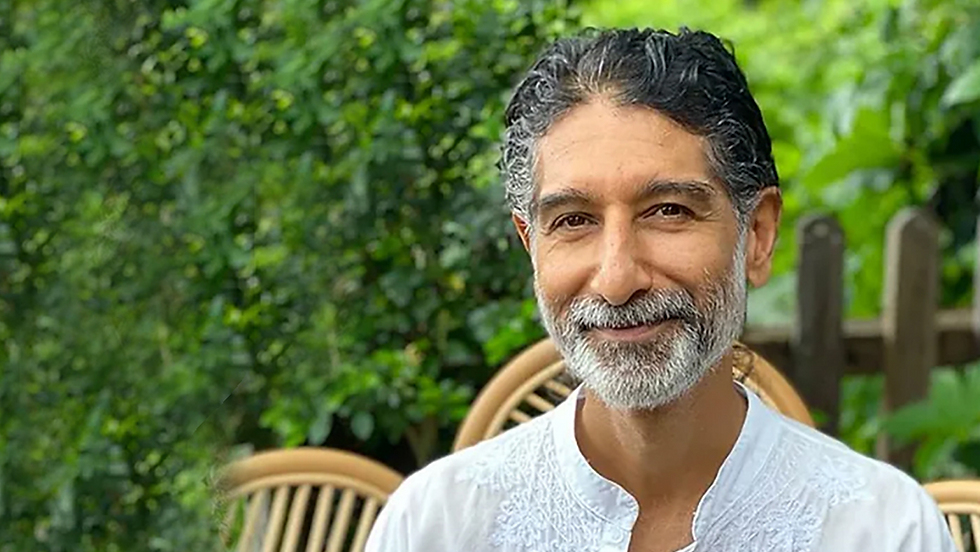What Is Spirituality
- Alison G
- Aug 4
- 4 min read

There is something inherently creative about humanity and the collective personality. We take the essence of things and build upon it, adding layers and evolving what already exists. In many ways, this is how art and culture come into being. For instance, Theravada monks vow to live a simple life, with little more than a begging bowl and robes for their modest needs, which are generously provided to them. The begging bowls come with holders, designed to raise the bowl to a comfortable level for eating. With plenty of time on their hands, monks can dedicate themselves to practice or other pursuits. In some cases, an interesting phenomenon can be observed.
The monks begin to embellish the holders, decorating them with intricate materials, designs, and patterns. What starts as a simple necessity soon becomes an art form, with monks comparing their creations, and this process often turns into a subtle competition. A similar phenomenon occurs with their robes. Due to constant wear, the fabric tends to tear, and so the monks patch them up. As more tears appear, more patches are added, and these patches become a symbol of a monk’s diligence and austerity. Even when new robes are offered after the rainy season, some monks may choose to keep their old ones. Through this creative expression, the monks, in their innocence, lose sight of their attachment and identification, something they are meant to be very mindful of. Yet, this happens. We can observe a similar pattern in spirituality around the world.
In all spiritual traditions, the essence of True Nature or Reality is understood as Oneness, Emptiness (formlessness), or often a combination of both. Through self-inquiry or exploration, one arrives at a direct experience and knowing that emerges from this Oneness or formlessness. In wisdom traditions, these processes of inquiry and realization were originally passed down orally and then written down, gradually evolving into abstract concepts and moral codes. However, over time, these concepts become the focus of the tradition, and their correctness is often dogmatically emphasized, while the underlying essence is forgotten.
We also see a great deal of creativity in how Westerners have adapted Eastern spiritual traditions. Based on archaeological evidence, yoga likely predates the Indus Valley civilization in India, which dates back to around 5000 B.C. The very purpose of yoga is embedded in its name - yoga means union. It was originally developed as a spiritual practice to facilitate the ultimate union with one’s True Nature. However, through the creative lens of the collective Western personality, yoga has transformed into something quite different, with modern variations such as Beer Yoga, Pirate Booty Yoga and even Puppy Yoga.
A similar transformation has occurred with Tantra. Traditionally, Tantra is the highest teaching in both the Hindu and Buddhist traditions of India. It was, and still is, a practice for those who have reached a certain level of consciousness, integration, and maturity, enabling them to bridge the gap between realization and Enlightenment in a single lifetime. Tantra guides practitioners in mastering the highest levels of manifestation, opening to infinite, boundless consciousness, and living a life of selfless service that honors all of existence and beyond. In contrast, Western Tantra often focuses more on pleasure and indulgence at the level of the personality, rather than being rooted in the essence of Being and service to that essence.
I hope my words have not offended anyone, as that is certainly not my intention. However, I do feel that spirituality, in many ways, has become heavily adorned and transformed by various new practices, creating a true postmodern mix that has taken on a life of its own. (This includes a wide range of activities such as yogic techniques, manifesting, breathwork, yoga, tantra, cuddle parties, eye-gazing, plant medicine use, and other exotic practices all labeled as "spiritual.") In the midst of this extravaganza, the essence of spirituality has, perhaps innocently, become buried.
One might ask, is there anything wrong with this? Absolutely not! Life is meant to be experienced. It is how we learn. Life is also to be enjoyed, and it should come with a sense of humor. So, why not strengthen the body, open the energy channels, practice breathwork, experience endorphin highs, and embrace joy and well-being at the physical level? Why not work on our psychology, cultivate better relationships, enjoy deeper intimacy and connection, or manifest our desires to create balance and harmony? These are all practical tools that can enhance our lives and, in turn, improve the world around us.
Spirituality, in its truest sense, pertains to Spirit and your true nature. The first step is recognizing that your true nature exists beyond the personality, something obscured by the attention and focus the personality has demanded of you throughout your life. The essence of who you truly are is also the very foundation of life itself, yet it often goes unnoticed because its immanence cannot be grasped by the personality. Knowing, being, and living from this place of Truth is what we call Spiritual Integration. Some sages suggest that we simply relax, let go, and drop everything (including the personality) to experience the unchanging peace and silence where we are always present - this is the realm of Spirit. When we quiet the mind, we begin to notice that Life, or Spirit, is constantly offering itself and communicating with us. All it takes is awareness and receptivity.




Comments